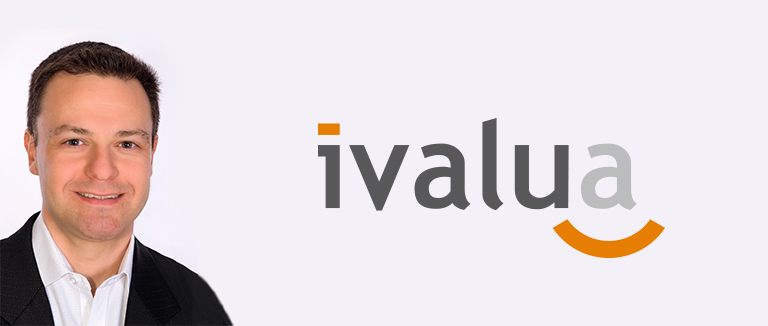Recent research from Ivalua has revealed that almost three-quarters (74%) of telecoms organisations have encountered some type of supply chain risk in the last year. The biggest supply chain risks experienced by telcos include supply shortage (55%), supplier failure (50%) and geopolitical changes (35%).
Telcos also admitted to not having comprehensive and deployed contingency plans in place to prepare the supply chain for risks such as; geopolitical changes (85%), Brexit (77%), supply failure (67%), lack of compliance with regulations (62%), supply shortage (62%) and natural disasters (60%).
With this in mind, George Malim, the managing editor of VanillaPlus, spoke to Alex Saric, a smart procurement expert at the firm to understand more about what telcos can do to mitigate procurement risks.
George Malim: Does the reliance on a greater number of vendors, which we’re seeing in virtualised networks and for 5G, put telcos at greater supply chain risk than in the previous generation when small numbers of vendors were involved but vendor lock-in – and the potential failure of a far larger supplier – could be seen as a greater risk?
Alex Saric: At an aggregate level, this approach does generally increase risk. The failure of a large supplier is likely to have more impact than that of a small supplier, but even the failure of a smaller supplier can have tremendous impact, especially in the case of capital projects. The reality is that few companies have the processes and systems in place to effectively monitor supplier risk.
When a small number of suppliers are involved, they can normally maintain a good sense of risk through inefficient approaches because of the close connections. But when the number increases there needs to be a more systematic approach. Without that, visibility into risk is much worse when many smaller suppliers are involved. A more complex supply chain also increases difficulty of contingency planning.
GM: How can telcos manage supply chain risk better?
AS: The key to effective risk management is visibility, which must be maintained at the supplier level and, in the case of capital projects such as cellular tower construction, the project level. Success in both requires a smart approach to procurement.
Effectively assessing supplier risk requires internal information such as supplier performance, supplier-provided information such as certifications, and augmentation with external information that provide insights into risk events, financials, CSR credentials and others. There is no single source for all this information but smart solutions can bring everything together into a single console, linking information to a single supplier record for a truly 360-degree view. Such visibility is essential in an era where regulators can levy heavy fines for GDPR breaches or uncovering forced labour practices at a supplier.
At the project level, telcos must ensure they can effectively evaluate the many factors involved in selecting suppliers and planning for contingencies. Smart solutions also improve visibility and scenario analysis at the project level. Capital projects often involve hundreds of items and associated services. Optimising the overall supply chain requires the simultaneous assessment of many factors across many suppliers, considering cost, performance and service levels factors. Being able to evaluate all these factors and assess scenarios allows procurement to both optimise chance of project success and be prepared for contingencies.
GM: What procurement processes can telcos put in place to mitigate against apparently random risks, such as the mood of Donald Trump in relation to Huawei or the eccentricities of the UK electorate?
AS: It’s difficult to be prepared for everything, especially when today’s environment is so uncertain. Whether it’s Brexit or global tariff wars, organisations need to carefully assess potential and existing suppliers to try and put in place contingency plans to prepare for every eventuality, especially scenarios such as changes to US trade policy. The inability to gain visibility into suppliers and their activities leaves many organisations unprepared for risk when it eventually strikes.
For example, less than half of organisations – 49% – have fully developed and deployed contingency plans in place for a lack of compliance with regulations and just 23% are prepared for geopolitical changes. By ensuring visibility into suppliers and making scenario analysis a part of their supplier selection and management process, they can both minimise the potential impact of such seemingly random risks and also be quick to react should they strike. This requires the right processes and the right technology to empower procurement leaders.
GM: What do you see as the greatest procurement risk facing telcos?
AS: Global tariff wars and uncertainty around Brexit is only going to increase the risk of a global recession hitting us in 2020, and the biggest risk for procurement is departments going backwards. Procurement has progressed so much in the last few years, going from a cost cutting department to a hub for spend that adds strategic value, helping to build relationships with suppliers that helps to identify, plan for and mitigate risk and even support revenue growth.
For example, Sprint has configured its eSourcing technology to run high volume forward auctions to sell their used handsets at optimal prices, generating significant revenue gains while also reducing costs in more traditional reverse auctions on purchased goods and services. A recession would see organisations refocus on driving down cost, potentially damaging supplier relationships and sending procurement backwards towards its cost cutting dark ages. At a time when businesses are more exposed to risk than ever before, a procurement relapse would make risk management far more difficult.
GM: What single thing should telcos do to minimise procurement risk?
AS: The single most important thing telcos can do to minimise procurement risk is to gain effective visibility into suppliers. Make sure supplier management is an integral part of your processes and that you have the systems that allow you to scale that visibility across all aspects of risk and across many suppliers. With the right level of visibility, organisations can ensure agility to effectively adjust to changes in today’s highly uncertain and rapidly evolving world.






